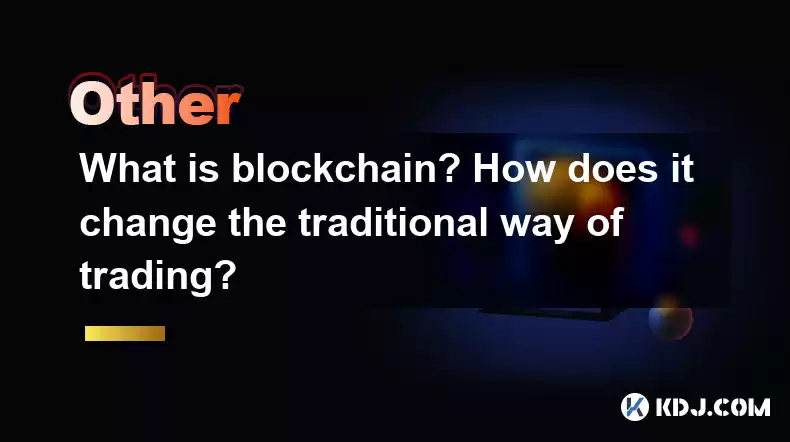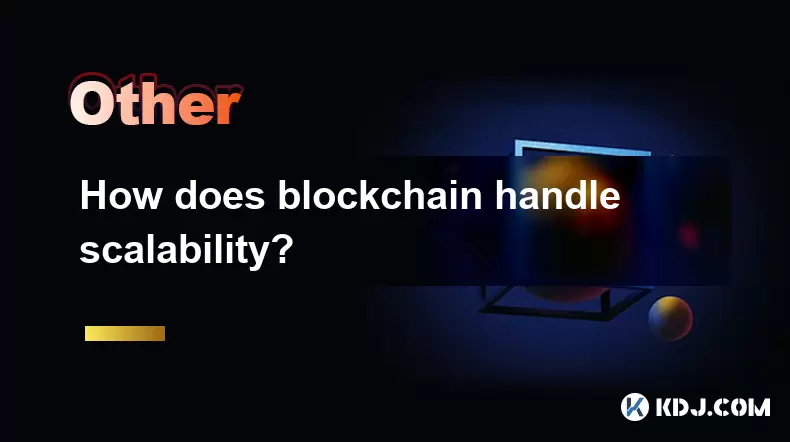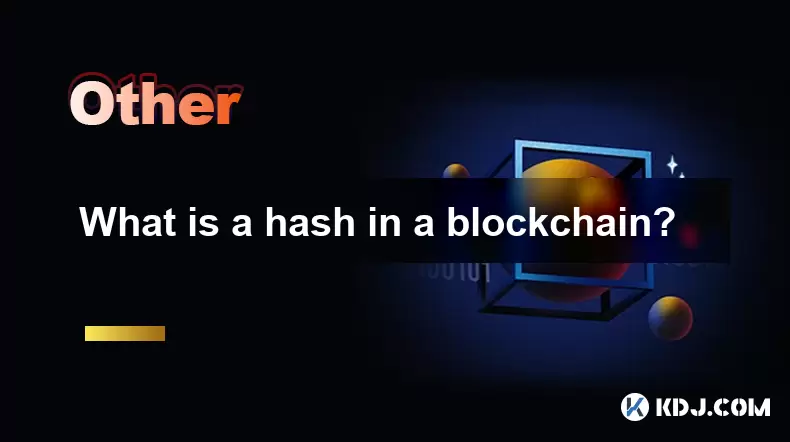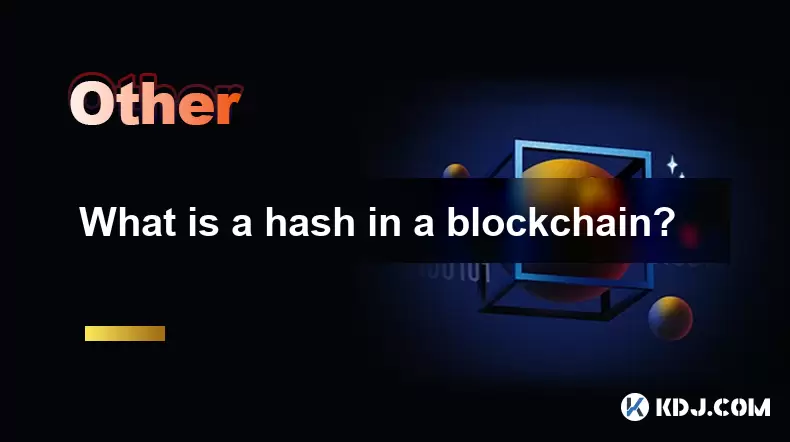-
 Bitcoin
Bitcoin $113900
-1.39% -
 Ethereum
Ethereum $3517
-4.15% -
 XRP
XRP $3.009
1.59% -
 Tether USDt
Tether USDt $0.9997
-0.04% -
 BNB
BNB $766.8
-1.41% -
 Solana
Solana $164.6
-2.38% -
 USDC
USDC $0.9998
-0.02% -
 TRON
TRON $0.3277
0.65% -
 Dogecoin
Dogecoin $0.2023
-1.67% -
 Cardano
Cardano $0.7246
0.05% -
 Hyperliquid
Hyperliquid $38.27
-4.77% -
 Sui
Sui $3.528
-0.52% -
 Stellar
Stellar $0.3890
-0.73% -
 Chainlink
Chainlink $16.16
-2.69% -
 Bitcoin Cash
Bitcoin Cash $539.9
-4.38% -
 Hedera
Hedera $0.2425
-2.00% -
 Avalanche
Avalanche $21.71
-0.97% -
 Toncoin
Toncoin $3.662
5.73% -
 Ethena USDe
Ethena USDe $1.000
-0.02% -
 UNUS SED LEO
UNUS SED LEO $8.964
0.35% -
 Litecoin
Litecoin $107.7
2.33% -
 Shiba Inu
Shiba Inu $0.00001223
-0.40% -
 Polkadot
Polkadot $3.617
-0.97% -
 Uniswap
Uniswap $9.052
-2.49% -
 Monero
Monero $295.1
-3.79% -
 Dai
Dai $0.9999
0.00% -
 Bitget Token
Bitget Token $4.315
-1.85% -
 Pepe
Pepe $0.00001060
0.11% -
 Cronos
Cronos $0.1342
-2.72% -
 Aave
Aave $256.0
-0.87%
What is blockchain? How does it change the traditional way of trading?
Blockchain revolutionizes trading by enabling direct, secure, and fast transactions without intermediaries, reducing costs and enhancing transparency.
Apr 28, 2025 at 08:14 am

Blockchain is a decentralized and distributed digital ledger technology that records transactions across numerous computers in a way that makes it virtually impossible to alter, hack, or cheat the system. At its core, blockchain is a chain of blocks where each block contains a list of transactions. These transactions are secured and validated through cryptographic means, ensuring that once data is recorded, it cannot be changed retroactively without the alteration of all subsequent blocks, which requires consensus of the network majority.
The traditional way of trading involves centralized systems where a single entity, such as a bank or a stock exchange, acts as the intermediary to facilitate, record, and verify transactions. This centralized approach has several drawbacks, including the potential for single points of failure, high transaction fees, and delays in processing. Blockchain technology introduces a paradigm shift by enabling peer-to-peer transactions without the need for intermediaries, thereby reducing costs, increasing speed, and enhancing security.
How Blockchain Works
Blockchain operates on a network of nodes, which are essentially computers that participate in the blockchain network. Each node has a copy of the entire blockchain, and they work together to validate and record transactions. When a new transaction is initiated, it is broadcast to the network, where nodes use complex algorithms to verify its authenticity. Once verified, the transaction is grouped with others into a block, which is then added to the chain.
The process of adding a new block to the chain is known as mining. Miners compete to solve cryptographic puzzles, and the first to solve the puzzle gets to add the new block to the blockchain and is rewarded with cryptocurrency. This incentivizes participants to maintain the integrity of the network. Once a block is added, it is immutable, meaning it cannot be altered, ensuring the security and transparency of the transaction history.
Impact on Trading
Blockchain technology revolutionizes trading by enabling direct transactions between parties without the need for intermediaries. This disintermediation reduces transaction costs significantly, as there are no middlemen taking a cut. For example, traditional cross-border payments can take days and incur high fees, but with blockchain, these transactions can be completed in minutes at a fraction of the cost.
Another significant impact is the increase in transaction speed. Traditional systems often involve multiple steps and verifications, leading to delays. Blockchain, on the other hand, allows for near-instantaneous transactions, as the validation process is distributed across the network. This speed is particularly beneficial for trading assets that require quick execution, such as stocks and cryptocurrencies.
Transparency and security are also enhanced with blockchain. Every transaction is recorded on a public ledger, making it easy to track and verify. The use of cryptography ensures that transactions are secure and that the identities of the parties involved are protected. This level of transparency and security reduces the risk of fraud and increases trust among traders.
Smart Contracts and Automated Trading
Smart contracts are self-executing contracts with the terms directly written into code. They automatically enforce and execute the terms of a contract when predefined conditions are met. This automation eliminates the need for intermediaries and reduces the potential for human error or manipulation. In trading, smart contracts can be used to automate the execution of trades, ensuring that they are carried out exactly as agreed upon.
For example, a smart contract can be programmed to automatically buy or sell a cryptocurrency when it reaches a certain price. This automation not only speeds up the trading process but also ensures that trades are executed without the need for manual intervention. This is particularly useful in volatile markets where timing is critical.
Challenges and Considerations
Despite its numerous benefits, blockchain technology also faces several challenges. One of the main challenges is scalability. As the number of transactions on a blockchain increases, the network can become congested, leading to slower transaction times and higher fees. Various solutions, such as layer-two scaling solutions and sharding, are being developed to address this issue.
Another challenge is regulatory uncertainty. Different countries have different regulations regarding cryptocurrencies and blockchain technology, which can create uncertainty for traders and businesses. It is important for traders to stay informed about the regulatory environment in their jurisdiction and to comply with all relevant laws and regulations.
Security is also a concern. While blockchain itself is secure, the platforms and wallets used to interact with it can be vulnerable to hacks and cyberattacks. Traders must take steps to protect their assets, such as using strong passwords, enabling two-factor authentication, and storing their cryptocurrencies in secure wallets.
Practical Applications in Trading
Blockchain technology has numerous practical applications in trading. One of the most prominent is the use of cryptocurrencies as a trading asset. Cryptocurrencies like Bitcoin and Ethereum can be traded on various exchanges, and their decentralized nature makes them attractive to traders looking for alternatives to traditional financial instruments.
Another application is the use of blockchain for tokenization. Tokenization involves representing real-world assets, such as real estate or art, as digital tokens on a blockchain. These tokens can then be traded on blockchain-based platforms, making it easier and more efficient to buy and sell these assets. Tokenization also allows for fractional ownership, enabling more people to invest in high-value assets.
Blockchain can also be used for supply chain management in trading. By recording the movement of goods on a blockchain, traders can ensure the authenticity and provenance of the products they are trading. This transparency can help reduce fraud and increase trust in the trading process.
Frequently Asked Questions
Q: How does blockchain ensure the security of transactions?
A: Blockchain ensures the security of transactions through the use of cryptography. Each transaction is encrypted and linked to the previous transaction, creating a chain of blocks that is virtually impossible to alter. Additionally, the decentralized nature of blockchain means that there is no single point of failure, making it more resistant to hacks and cyberattacks.
Q: Can blockchain be used for trading traditional financial instruments like stocks and bonds?
A: Yes, blockchain can be used for trading traditional financial instruments. Some companies are already exploring the use of blockchain for issuing and trading stocks and bonds. Blockchain can streamline the process, reduce costs, and increase transparency, making it an attractive option for trading these assets.
Q: What are the potential risks of using blockchain for trading?
A: The potential risks of using blockchain for trading include regulatory uncertainty, scalability issues, and security concerns. Traders must stay informed about the regulatory environment, be aware of the limitations of the technology, and take steps to protect their assets from hacks and cyberattacks.
Q: How can traders get started with blockchain-based trading?
A: To get started with blockchain-based trading, traders should first educate themselves about the technology and its applications. They can then choose a reputable cryptocurrency exchange or blockchain-based trading platform, set up a secure wallet, and begin trading. It is important to start with small amounts and to use risk management strategies to protect their investments.
Disclaimer:info@kdj.com
The information provided is not trading advice. kdj.com does not assume any responsibility for any investments made based on the information provided in this article. Cryptocurrencies are highly volatile and it is highly recommended that you invest with caution after thorough research!
If you believe that the content used on this website infringes your copyright, please contact us immediately (info@kdj.com) and we will delete it promptly.
- Bitcoin, XRP, and the Price Drop Blues: What's Shakin' in Crypto?
- 2025-08-03 00:30:12
- Bank of America, Ripple, and RLUSD: A New Era in Digital Finance?
- 2025-08-03 00:30:12
- Bitcoin Strategy: Saylor's Not Hoarding, He's Building an Empire
- 2025-08-02 22:30:12
- Bitcoin Bloodbath: Macro Pressures and Liquidations Unleash Crypto Chaos
- 2025-08-02 22:30:12
- Tron, Cold Wallets, and Crypto Trends: What's Hot in the Market?
- 2025-08-02 23:10:12
- Bitcoin's Wild Ride: Davinci, Investors, and the $500K Dream
- 2025-08-02 23:50:12
Related knowledge

What is the difference between on-chain and off-chain transactions?
Aug 02,2025 at 04:22pm
Understanding On-Chain TransactionsOn-chain transactions refer to digital asset transfers that are recorded directly on a blockchain ledger. These tra...

What is the double-spending problem and how does blockchain prevent it?
Aug 02,2025 at 01:07pm
Understanding the Double-Spending ProblemThe double-spending problem is a fundamental challenge in digital currency systems where the same digital tok...

What is the difference between a blockchain and a database?
Aug 01,2025 at 09:36pm
Understanding the Core Structure of a BlockchainA blockchain is a decentralized digital ledger that records data in a series of immutable blocks linke...

How does blockchain handle scalability?
Aug 02,2025 at 02:58pm
Understanding Blockchain Scalability ChallengesBlockchain scalability refers to a network's ability to handle an increasing volume of transactions wit...

What is a hash in a blockchain?
Aug 02,2025 at 05:28am
Understanding the Concept of Hash in BlockchainA hash in the context of blockchain technology refers to a unique digital fingerprint generated by a cr...

What is a hash in a blockchain?
Aug 02,2025 at 04:43am
Understanding the Concept of Hash in BlockchainA hash in the context of blockchain technology refers to a unique digital fingerprint generated by a cr...

What is the difference between on-chain and off-chain transactions?
Aug 02,2025 at 04:22pm
Understanding On-Chain TransactionsOn-chain transactions refer to digital asset transfers that are recorded directly on a blockchain ledger. These tra...

What is the double-spending problem and how does blockchain prevent it?
Aug 02,2025 at 01:07pm
Understanding the Double-Spending ProblemThe double-spending problem is a fundamental challenge in digital currency systems where the same digital tok...

What is the difference between a blockchain and a database?
Aug 01,2025 at 09:36pm
Understanding the Core Structure of a BlockchainA blockchain is a decentralized digital ledger that records data in a series of immutable blocks linke...

How does blockchain handle scalability?
Aug 02,2025 at 02:58pm
Understanding Blockchain Scalability ChallengesBlockchain scalability refers to a network's ability to handle an increasing volume of transactions wit...

What is a hash in a blockchain?
Aug 02,2025 at 05:28am
Understanding the Concept of Hash in BlockchainA hash in the context of blockchain technology refers to a unique digital fingerprint generated by a cr...

What is a hash in a blockchain?
Aug 02,2025 at 04:43am
Understanding the Concept of Hash in BlockchainA hash in the context of blockchain technology refers to a unique digital fingerprint generated by a cr...
See all articles

























































































